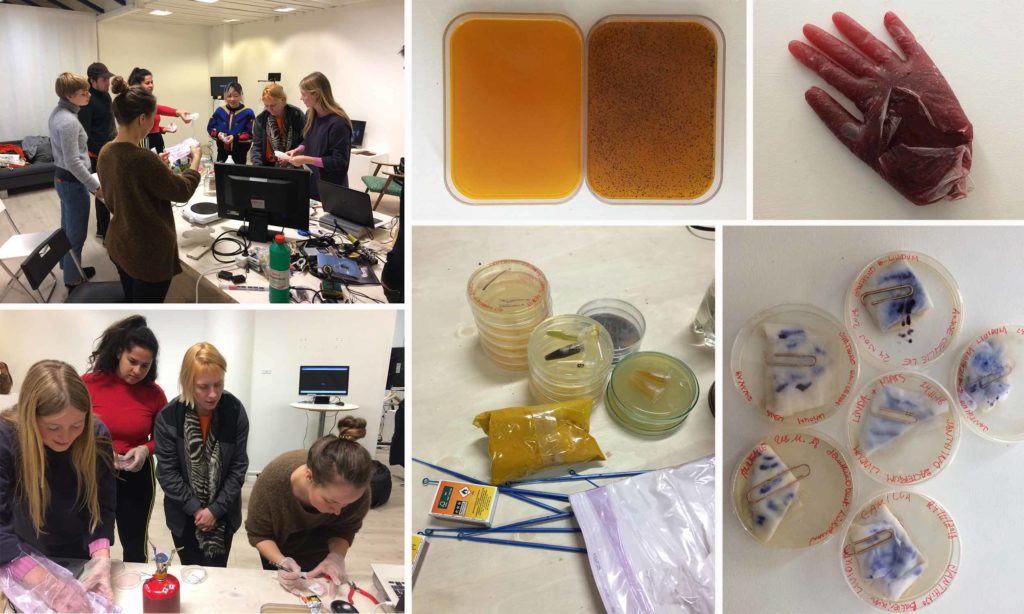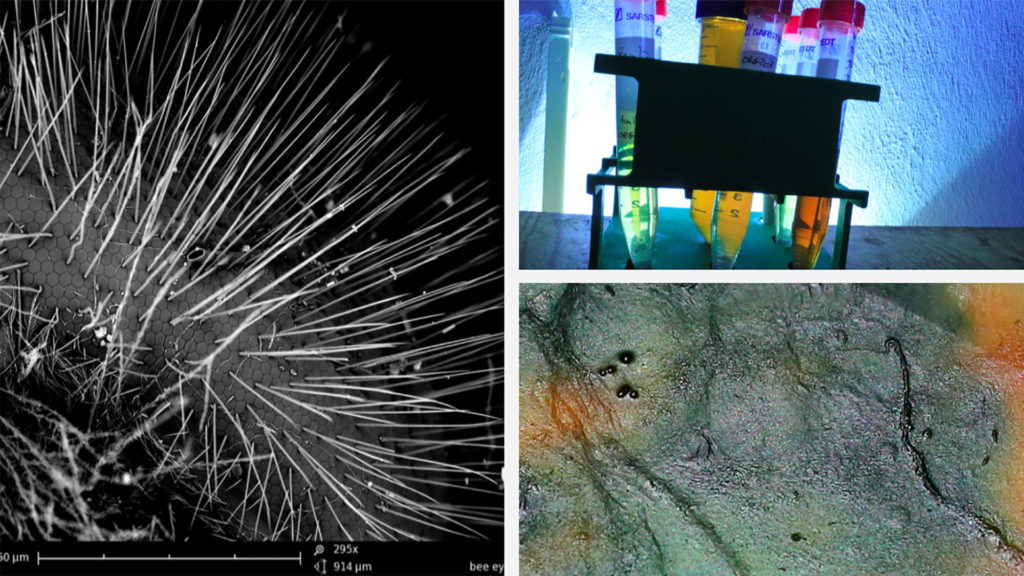The workshop -the Umwelt of the Forager- will be studying the bio
semiotics of the beehive & its ecosystem. The workshop will be
organized as a DYI BioLab: the starting point is the role of pheromones
and the important task these signifiers play for the communication in
the beehive and for the relation of the bees to their ecosystem.
Participants will be sensing the ecology of the beehive and interpret the emergence of symbols. They will be detecting the granularity of waves formed between bacterial signals and the signs emitted through invisible (bio)technologies.
In several hands-on sessions the microbial sphere in and around the beehive will be studied under the microscope. Participants will prepare agar plates to culture bacteria and spores that they collect at the intersection of places, called the Umwelt of the Forager (bee). They will ‘design’ with bacteria and reflect upon shared habitats for bees and other micro-organisms.
The Umwelt of the Forager: on Bees, pheromones and bacteria
by AnneMarie Maes
Date: 15:00-19:00 / 23rd and 24th Nov
Building: Piksel Studio 207
https://18.piksel.no/2018/11/23/the-umwelt-of-the-forager-on-bees-pheromones-and-bacteria/
The focus of the workshop-lab will be on learning & sharing knowledge by asking questions & discussions.
Day 1:
- introduction to the Intelligent Guerrilla Beehive project, introduction to the functioning of a bee colony and the relation of the honeybees to their Umwelt.
- prepare agar plates and introduction to DIY swabbing kit – we will make swabs of the ecosystem and put the results to culture in the petridishes, to study them later under the microscope.
- we will collect plant samples from the local ecosystem to study under the microscope, to understand the relation of the flowers and the bees.
Day 2:
- introduction to samples of biomaterials (microbial cellulose, bioplastic, bacterial designs).
- inoculation of cotton fabric with bacteria (Janthinobacterium lividum) to make a personal bacterial design; make the agar plates and make the LB-food for the bacteria
- microscopic study of local plant samples.
- drawing blueprints for Shared Habitats and fix them with bioplastic in a petridish
bio:
AnneMarie Maes is an artist who has been studying the tight interactions and co- evolutions within urban ecosystems. Her research practice combines art and science with a strong interest for DIY technologies and biotechnology. She works with a range of biological, digital and traditional media, including live organisms. Her artistic research is materialized in techno-organic objects that are inspired by factual/fictional stories; in artifacts that are a combination of digital fabrication and craftsmanship; in installations that reflect both the problem and the (possible) solution, in multispecies collaborations, in polymorphic forms and models created by eco-data.
On the rooftop of her studio she created an open- air lab and experimental garden where she studies the processes by which nature creates form. Her research provides an ongoing source of inspiration for her artworks.
The Bee Agency as well as the Laboratory for Form and Matter -where she experiments with bacteria and living textiles- open a framework that has been initiating a wide range of installations, photography works, objects and books – all on the edge of art, science and technology.
She has a strong international profile, having exhibited in art centers and festivals worldwide. In 2017 she was awarded a Honorary Mention in the Hybrid Art category at Ars Electronica for her Intelligent Guerilla Beehive, a project on the intersection of cellular life and biotechnology – creating metabolic sculptures build of microbe, plant and animal intelligence.




